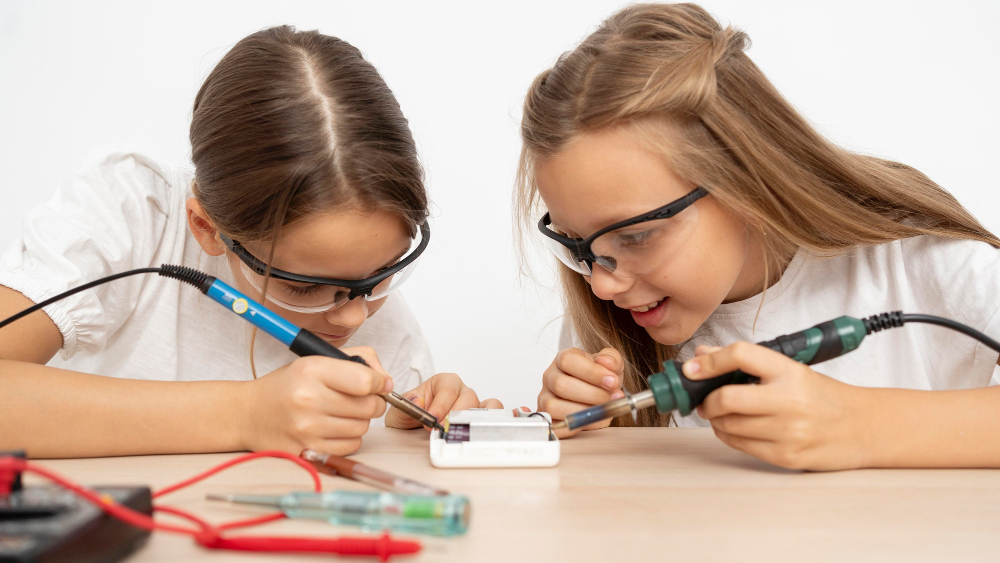Design and Technology lessons are a blend of creativity and problem-solving, where pupils transform ideas into tangible, functional products. But how do you effectively provide feedback on such dynamic, hands-on learning? In this guide, Sudesh Nandlal, Head of Design Technology at Holy Family School, shares a powerful framework for delivering meaningful feedback on D&T lessons. Discover how to spot what’s working, identify areas for growth, and ultimately enhance the quality of teaching and learning in D&T classrooms.
Design and Technology: Lesson Feedback Guide

Sudesh Nandlal
Head of Design Technology
Holy Family Catholic School, Walthamstow
This guide provides a framework for observing Design and Technology (D&T) lessons across Key Stages 3 (KS3), 4 (KS4), and 5 (KS5) in the UK. The guide aligns with the National Curriculum and best practices in teaching and learning.
1. Lesson Planning and Structure
- Clear Objectives:
Are the lesson objectives specific, measurable, and aligned with the curriculum?
Are they communicated to students at the start of the lesson? - Engagement:
Is there a hook or starter activity to engage learners?
Does the lesson build on prior knowledge and skills? - Adaptive Teaching:
Are tasks scaffolded to support a range of abilities?
Are there extension activities for higher-achieving students? - Pace and Timing:
Is the lesson appropriately paced to ensure progress?
Are transitions between activities smooth?
2. Teaching and Learning
- Teacher Subject Knowledge:
Does the teacher demonstrate expertise in D&T concepts, tools, and techniques?
Are real-world applications of the subject highlighted? - Instruction:
Are instructions clear and concise?
Are demonstrations effective, with safety and precision emphasised? - Questioning Techniques:
Are open-ended and probing questions used to deepen understanding?
Is there a balance between teacher-led and student-led discussion? - Practical Skills Development:
Are students given hands-on opportunities to develop skills (e.g., CAD, prototyping, textiles, electronics, casting)?
Is technical vocabulary consistently reinforced?
3. Student Engagement and Learning
- Active Participation:
Are students actively engaged in practical and theoretical tasks?
Do students collaborate effectively in group activities? - Independence and Problem-Solving:
Are students encouraged to think creatively and independently?
Are they supported in identifying and solving design problems? - Quality of Work:
Is there evidence of high standards in designing, making, and evaluating?
Are students challenged to refine their work and justify design decisions?
4. Classroom Environment and Resources
- Health and Safety:
Is the workspace organised and safe, with tools and materials handled correctly?
Are risk assessments evident, and are students aware of safety protocols? - Resources:
Are appropriate tools, machines, and digital technologies used effectively?
Are resources well-prepared and accessible? - Display and Inspiration:
Are displays showcasing student work and industry links visible?
Are diverse design inspirations, including cultural and sustainability considerations, integrated?

5. Assessment for Learning
- Feedback:
Is feedback constructive, timely, and aligned with learning objectives?
Do students have opportunities to reflect and act on feedback - Formative Assessment:
Are questioning and peer/self-assessment used to gauge understanding?
Are students clear on how to progress - Summative Assessment:Are assessment criteria aligned with exam board standards (KS4/KS5)?
Is there evidence of tracking and supporting student progress?
6. Differentiation Across Key Stages
- KS3:
Focus on foundational skills, exploration of materials, and understanding of design principles. Encourage creativity and curiosity. - KS4:
Emphasis on specialisation (e.g., Graphics, Resistant Materials, Textiles, or Food). Focus on exam preparation and NEA development. - KS5:
Advanced problem-solving, independent project work, and links to industry and higher education. Integration of theory and practical skills at a professional standard.
6. Reflection and Next Steps
- Overall Effectiveness:
How well did the lesson meet its objectives?
Were students challenged and supported to achieve their best? - Recommendations:
What areas of practice could be improved or developed further?
How can the lesson contribute to broader curriculum goals? - Are there opportunities for the development of ideas, as well as making iterations?(iterative is the process of doing something again and again, usually to improve it)
- Is there clear opportunity to explore and develop technical knowledge and skills within the DT lesson/sequence of learning as it develops? Are mini-plenaries used consistently? Are all students engaged in the task? Be mindful that there are students at different stages of the practical activities
- Does the DT lesson/sequence of learning allow the opportunity to design and make purposeful and functional products that can be tested against a design criteria?
- Are the pupils receiving constructive one2one feedback, either verbally during the lesson or when marking?
Conclusion
To conclude, as a non Dt teacher observing a well organised DT lesson, it may seem like ‘organized chaos’. However, communicating with the pupils will be a good judge of how effective the lesson is. Pupils will generally communicate with confidence , their design and project because all DT students have a sense of ownership and pride in their work.
Join our network of teaching and learning leaders
Sign up today to see how ProgressTeaching can help you drive excellence through feedback!
